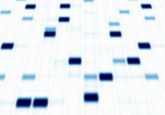Application Note: Simultaneous Analysis of intact Human Insulin and Five Analogs in Human Plasma Using µElution SPE and a CORTECS UPLC Column
Introduction
Insulin is perhaps one of the best known and earliest peptide therapeutics.
Multiple long and fast-acting analogs have also been developed, and a patient may often be prescribed one of each for diabetes control. Quantification of biologics, such as insulin’s, has historically been performed using ligand binding assays (LBAs) such as ELISAS. LC/MS/MS, however, has certain advantages over LBAs, such as shorter development times, higher accuracy and precision, the ability to multiplex, no cross-reactivity, and the ability to readily distinguish between closely related insulin’s. Intact insulin’s are particularly difficult to analyse by LC/MS/MS, as MS sensitivity is low due to the poor transfer into the gas phase, and poor fragmentation patterns exist due to the presence of multiple stabilizing disulphide bonds. In addition, insulin and its analogs suffer from non-specific binding and poor solubility, making LC and sample preparation method development difficult. A few LC/MS/MS methods do exist; however, most of those methods involve time-consuming and laborious immunoaffinity purification and/or nano-flow LC. Distinguishing between human insulin and insulin lispro (Humalog) is a very specific challenge for quantifying insulin’s, as they differ by a simple reversal in the position of two amino acids. Only a single low-molecular weight fragment differentiates the two, making selective sample preparation and chromatography critical
Download Application Note Now
View more content from our Overcoming Matrix Effects Spotlight.





